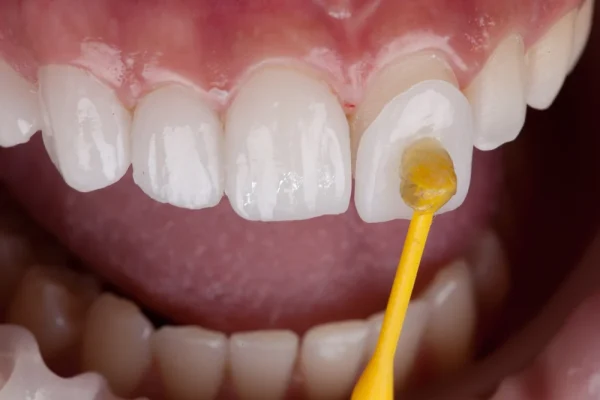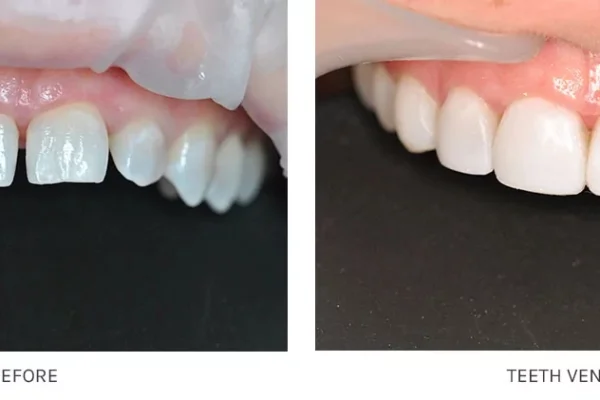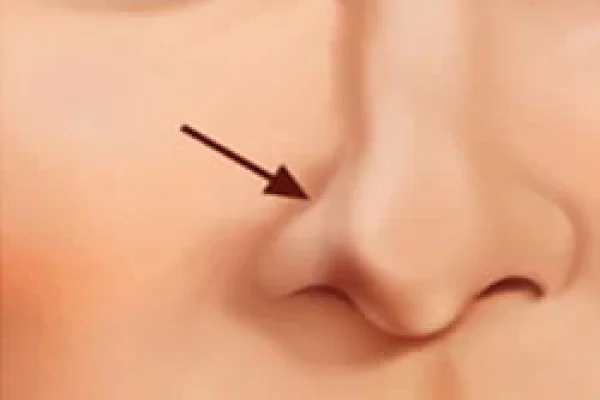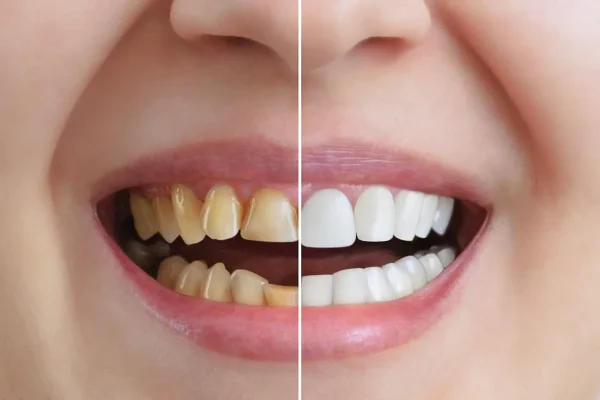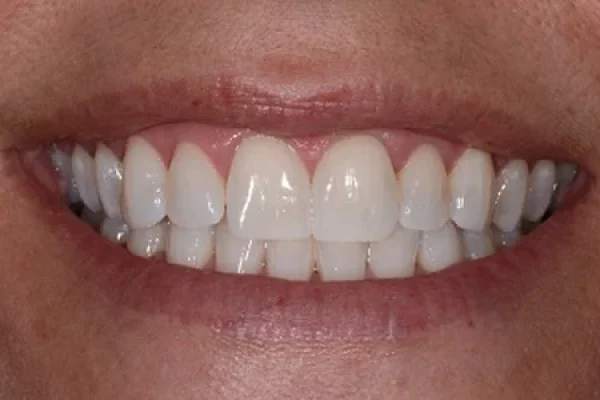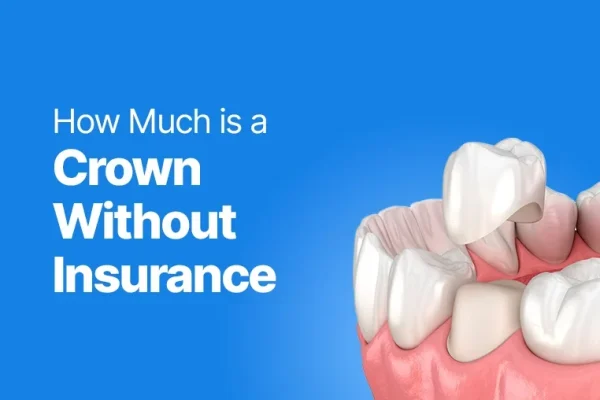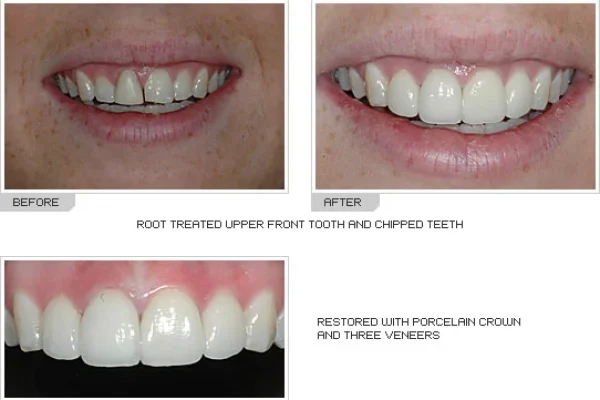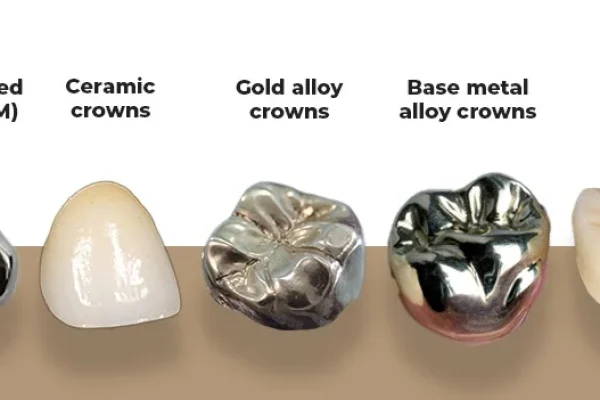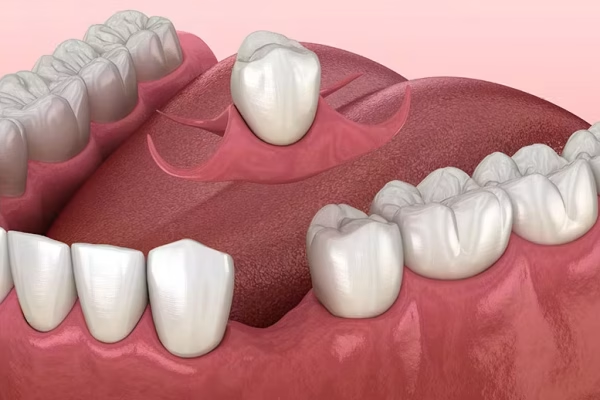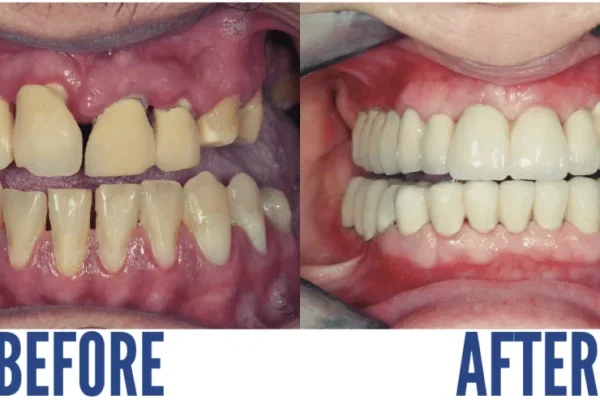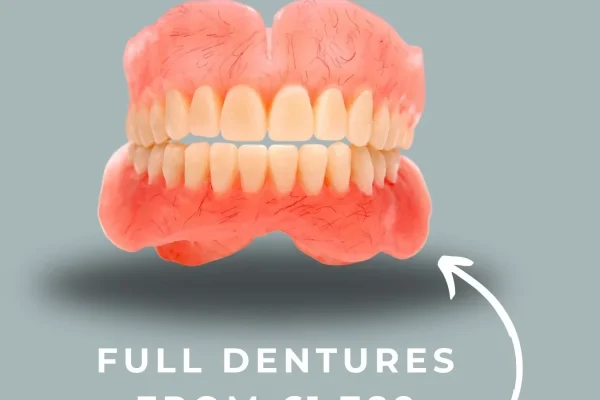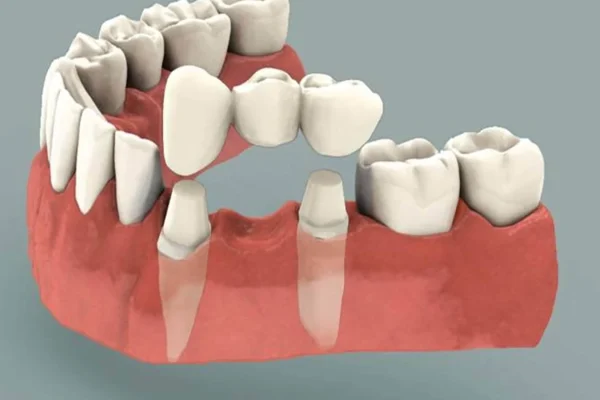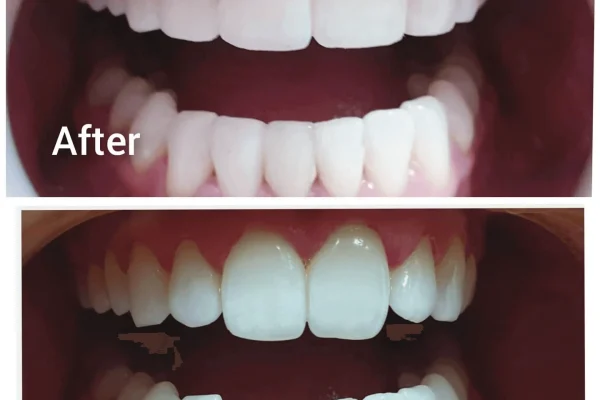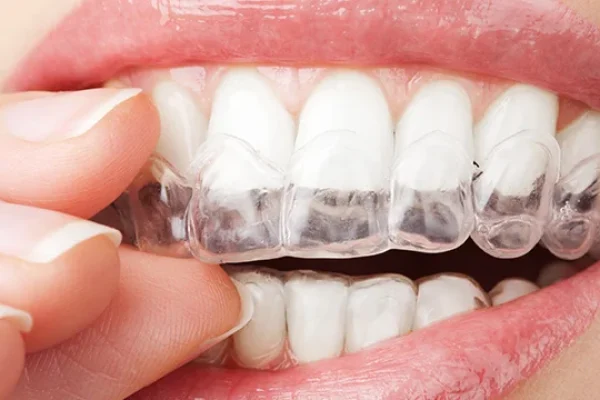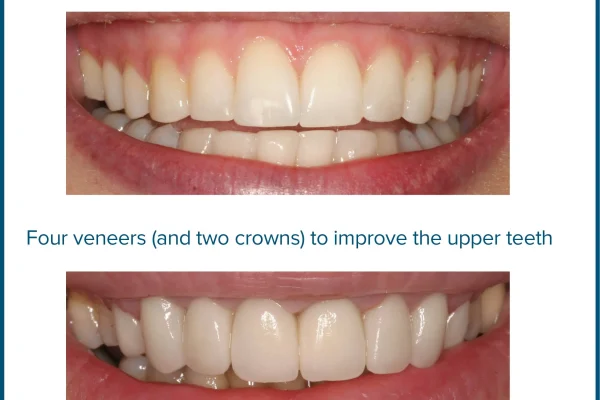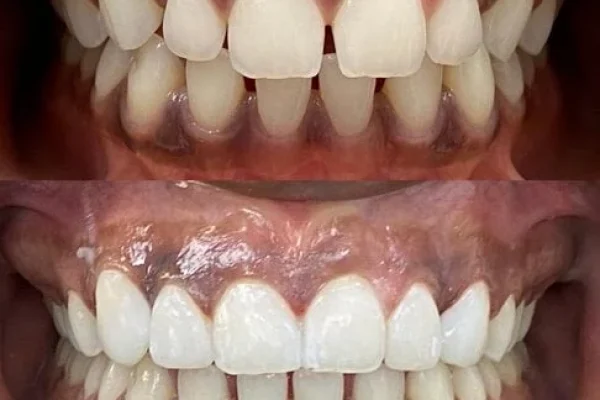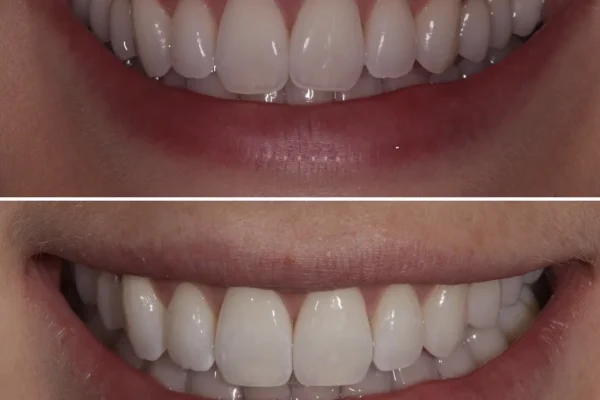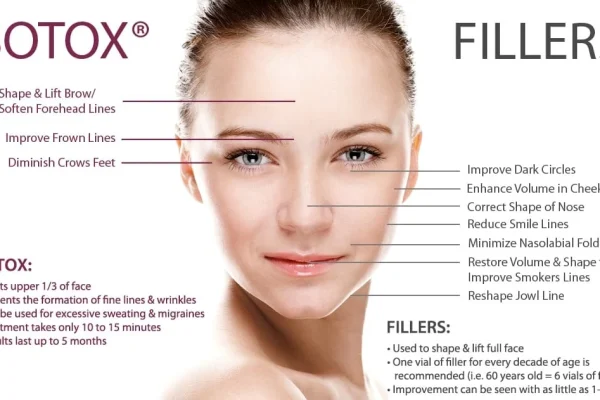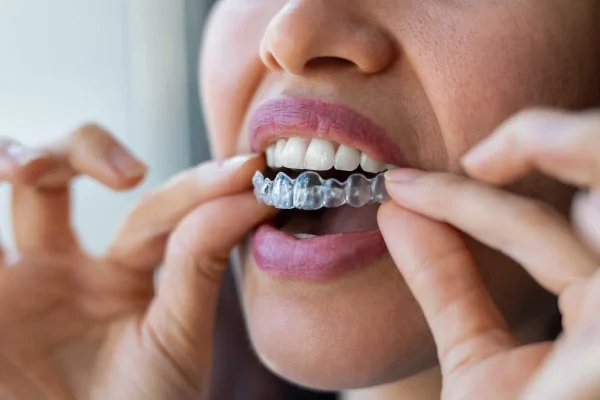
The quest for a perfect smile is timeless, but the tools? They’ve radically evolved. Gone are the days when straightening teeth inevitably meant a mouth full of conspicuous metal. Enter the era of discretion: invisible dental braces. This isn’t just a minor tweak in orthodontic technology; it’s a revolution, fundamentally changing how we approach teeth alignment for both teens and adults. Their appeal is magnetic, rooted in a potent combination of near-invisibility and unparalleled convenience. Imagine straightening your teeth without the world needing to know, easily removing your appliance to enjoy your favourite meals or maintain your oral hygiene routine without obstruction. That’s the promise. But beyond the sleek marketing, what’s the real story? This guide is your deep dive, your backstage pass to understanding everything about these modern marvels. We’ll dissect what clear aligners *really* are, demystify how they meticulously nudge teeth into place, confront the crucial question of cost and affordability, and evaluate their genuine effectiveness. We’ll map out the entire treatment journey, compare them head-to-head with traditional methods, and equip you with the essential knowledge for care and maintenance. Consider this your comprehensive dossier, designed to empower you with the information needed to decide if this path is right for transforming your grin. Because ultimately, when the treatment is done, “All you’ll see is the difference.” – a difference born from informed choices and cutting-edge tech. Let’s unravel the nuances and discover if these see-through braces hold the key to unlocking your most confident smile. The landscape of orthodontics has shifted, and understanding this terrain is the first step towards navigating it successfully. Prepare for a journey into clarity.
Table of Contents
ToggleKey Takeaways
- Invisible Braces Defined: Typically refer to clear, removable plastic trays (aligners) that incrementally straighten teeth.
- How They Work: Custom aligners apply gentle, consistent pressure based on a digital plan; worn 20-22 hours/day.
- Effectiveness: Highly effective for mild to moderate crowding, spacing, and bite issues; less so for severe cases. Patient compliance is crucial.
- Cost Factors: Average $3,000-$8,000+; depends on case complexity, duration, brand (e.g., Invisalign), location, and provider. Insurance may offer partial coverage.
- Treatment Time: Varies widely (6 months to 2+ years) based on case complexity and compliance.
- Pros vs. Cons: Pros include aesthetics, removability, comfort. Cons include strict compliance needed, potential speech changes (temporary), must be removed for eating/drinking (except water), requires diligent hygiene.
- Post-Treatment: Retainers are essential (often lifelong nightly wear) to maintain results.
- Supervision: Best results usually achieved under direct supervision of an orthodontist or experienced dentist.
What Are Invisible Dental Braces and How Do These Clear Aligners Work?
Let’s cut through the noise and get straight to the core: what exactly *are* invisible dental braces? Fundamentally, when most people use this term, they’re referring to clear aligners. Think of them not as braces in the traditional sense (no brackets, no wires), but as a series of custom-fabricated, transparent plastic trays that fit snugly over your teeth – much like a very precise, medical-grade mouthguard designed for transformation. These aligner teeth trays are the engines of change in this orthodontic approach. The underlying concept is brilliantly simple yet technologically sophisticated: each tray in your prescribed sequence is subtly different from the last, applying gentle, consistent pressure to specific teeth, guiding them incrementally towards their ideal positions according to a meticulously planned digital blueprint. They represent a significant departure from the fixed hardware of yesteryear, offering an alternative to conventional metal or even tooth-coloured ceramic brackets – hence why terms like invisible brackets for teeth, while sometimes used colloquially, aren’t technically accurate for aligners themselves, which forgo brackets entirely. The terminology can feel a bit fluid; you’ll hear invisible aligners, clear aligners, dental aligners, invisible teeth aligners, and see-through braces often used interchangeably to describe this system. While brand names like Invisalign have become near-synonymous with the category, the underlying technology involves these sequential, removable, clear trays. Understanding this basic definition is crucial before delving into the mechanics, costs, and considerations involved in choosing this increasingly popular route for achieving a straighter, healthier smile without the aesthetic impact of traditional orthodontic hardware. They are, in essence, personalised, progressive, plastic powerhouses working discreetly.
Is There Really Such a Thing as Truly Invisible Braces? Defining See-Through Options
The term “invisible” is powerful marketing, conjuring images of orthodontic treatment that simply vanishes from sight. But let’s inject a dose of reality: are invisible dental braces or clear aligners *truly* invisible? The honest answer is: not entirely, but remarkably close. Think “highly discreet” rather than “magically disappeared.” These see-through braces are typically crafted from a smooth, transparent, medical-grade thermoplastic material (often polyurethane resins, frequently BPA-free). This material is designed to be crystal clear, allowing your natural tooth colour to show through, making the aligners incredibly difficult to notice from a conversational distance. However, upon very close inspection, someone might discern the subtle sheen of the plastic covering the teeth. Factors like lighting conditions, the presence of attachments (small, tooth-coloured bumps bonded to certain teeth to help the aligners grip and move them more effectively), and how clean the aligners are kept can influence their visibility. Compared to the unmistakable architecture of traditional metal braces, or even the slightly more camouflaged but still noticeable ceramic braces (which use clear or tooth-coloured brackets and often a metal wire), clear aligners offer a quantum leap in aesthetic subtlety. They blend seamlessly with your smile, avoiding the metallic glint or the bulkier profile of brackets and wires. So, while “invisible” might be a slight exaggeration, the term effectively captures the core benefit: achieving orthodontic correction without the significant aesthetic compromise associated with older methods. They are the chameleons of the orthodontic world – blending in, rather than standing out, making the journey to a straighter smile a far less self-conscious experience for many.
How Do Aligners Move Teeth? Understanding the Mechanism
The magic behind clear aligners isn’t magic at all; it’s biomechanics orchestrated by sophisticated digital planning. So, how do aligners move teeth? The principle hinges on applying controlled, gentle, and consistent force. Your journey begins with a precise digital scan or impression of your teeth. This data is used to create a 3D model of your current bite and, crucially, to map out the entire desired movement sequence, tooth by tooth, from start to finish. This digital plan dictates the exact shape of each aligner in your personalized series. Each aligner teeth tray is designed to be worn for a specific period, typically one to two weeks, as prescribed by your orthodontist or dentist. During this time, the aligner exerts carefully calculated pressure on specific teeth, encouraging them to shift slightly – fractions of a millimetre – towards the position dictated by that particular tray’s shape. When you switch to the next aligner in the sequence, it fits snugly over the slightly shifted teeth and applies pressure for the next incremental movement. It’s a step-by-step progression, like frames in an animation, gradually guiding your teeth along the planned path. Depending on the treatment plan, aligners can achieve various movements: they can push teeth forwards or backwards (can aligners push teeth back? Yes, within limits and as part of a coordinated plan), rotate teeth, intrude or extrude teeth slightly, and close gaps. Sometimes, small, tooth-coloured composite ‘attachments’ are bonded to specific teeth to give the aligners extra leverage points, enabling more complex movements that might otherwise be challenging for a smooth plastic tray alone. It’s this combination of precise digital planning and the consistent application of gentle force through the sequence of custom trays that allows invisible teeth aligners to effectively reshape your smile over time.
How Long Does the Invisible Braces Treatment Process Typically Take?
One of the most pressing questions for anyone considering orthodontic work is: how long will this actually take? When it comes to invisible dental braces or clear aligners, the answer isn’t a simple one-size-fits-all number. The duration of treatment is highly variable, primarily dictated by the complexity of your individual case. Think of it on a spectrum: are you correcting minor crowding or spacing issues, or are you dealing with more significant bite problems and misalignment? The extent of the required tooth movement is the single biggest factor influencing how long invisible braces take to work. For relatively simple cases, treatment might be completed in as little as six months. However, for moderate alignment issues, the average treatment time often falls between 12 and 18 months. More complex cases, involving significant bite correction or extensive tooth movement, could potentially extend to 24 months or occasionally even longer, sometimes approaching the timelines seen with traditional braces. Another critical factor is patient compliance. Unlike fixed braces, aligners are removable, which is a major convenience but also places responsibility on the wearer. Achieving the desired results within the projected timeframe hinges on wearing the aligners for the recommended 20-22 hours per day. Slipping up on wear time consistently will inevitably slow down progress and extend the overall treatment duration. Your orthodontist will provide an estimated timeline based on your initial assessment and digital treatment plan, but remember this is an estimate, subject to how your teeth respond and how diligently you follow the protocol. Understanding this variability from the outset helps set realistic expectations for your journey with invisible aligners for teeth.
How Long Will I Have to Use My Clear Aligners? Exploring Average Timelines
Drilling down into specific timelines, while acknowledging the variations, can help paint a clearer picture. How long will I have to use my clear aligners? For minor adjustments, perhaps relapse from previous orthodontic work or slight cosmetic crowding/spacing, treatment might involve fewer aligner sets and could wrap up relatively quickly, potentially around 6 to 9 months. These quicker treatments are sometimes marketed as “express” or “lite” versions by brands like Invisalign. For more common, moderate cases – addressing noticeable crowding, gaps, or mild bite issues like a slight overbite or crossbite – the timeline typically extends. You might be looking at anywhere from 10 to 18 months, involving a larger number of aligner trays. This range covers a significant portion of adult and teen treatments. Complex cases, such as those requiring significant bite correction, major rotations of teeth, or closing large extraction spaces, will naturally demand a longer duration, often pushing towards the 18 to 24-month mark, or sometimes beyond. It’s important to clarify the question “how long invisible braces last.” This usually refers to the *treatment period*, not the physical durability of an individual aligner tray (which is designed for 1-2 weeks of use). Popular systems like Invisalign often quote average treatment times, but these are just averages; your personal timeline is unique. Your orthodontist will use sophisticated software to predict the movement and estimate the number of aligners needed, giving you the most accurate projection possible for your specific needs before you even begin wearing the first tray. Remember, consistency is key to staying on track with this estimate.
What Can I Expect After I Get Clear Braces? The Post-Treatment Phase
Crossing the finish line after wearing your final set of clear aligners is a moment of triumph, revealing the straighter smile you’ve worked towards. But the journey doesn’t quite end there. What can I expect after I get clear braces? The single most critical phase immediately following active treatment is retention. Teeth have a natural tendency, often called orthodontic relapse, to want to shift back towards their original positions. To prevent this undoing all your hard work and investment, retainers are absolutely essential. Your orthodontist will prescribe retainers – these might be removable clear retainers (similar in appearance to your aligners but designed to hold teeth steady, not move them), a fixed retainer (a thin wire bonded discreetly to the back of your front teeth), or sometimes a combination of both dental retainer. You’ll typically need to wear your removable retainers full-time initially (except for eating and cleaning), gradually transitioning to wearing them only at night, potentially for the long term – many orthodontists advise nightly wear indefinitely for the best chance of maintaining results permanently. Adhering to your retainer protocol is non-negotiable if you want your beautifully aligned smile to last. Beyond retainers, you should continue with excellent oral hygiene practices and regular dental check-ups. There might be some minor adjustments as your bite settles into its new position. Keeping these things to be kept in mind post Aligner Treatment is crucial for ensuring the stability and longevity of your invisible dental braces results. The retention phase is just as important as the active treatment phase itself.
Do I Still Need to Visit the Dentist or Orthodontist During Treatment?
A common misconception about clear aligners, perhaps fueled by the rise of direct-to-consumer options, is that they might eliminate the need for regular professional check-ins. So, do I still need to visit the dentist or orthodontist during treatment? Absolutely, yes – especially if you are undergoing treatment supervised by a local professional (which is generally recommended for comprehensive care). These appointments are crucial for monitoring your progress, ensuring your teeth are tracking correctly according to the digital plan, and making any necessary adjustments. Typically, you’ll have check-up appointments every 6-10 weeks, though the frequency can vary. During these visits, your orthodontist or dentist will assess the fit of your current aligners, check the health of your teeth and gums, potentially provide you with your next sets of aligners, and address any concerns you might have. They might also check on attachments or perform minor adjustments like interproximal reduction (IPR) – slight reshaping between teeth – if required by your plan. While aligner treatment often requires fewer and quicker appointments compared to traditional braces adjustments, these check-ins are vital for ensuring the treatment stays on track and achieves the optimal outcome safely. Do You Need to Attend Appointments in Person? For provider-supervised treatment, yes, these in-person checks are standard practice dental check-up. While some remote monitoring tools are emerging, the standard of care typically involves physical visits. This differs significantly from purely remote, direct-to-consumer models where in-person professional oversight throughout the treatment is minimal or absent, a key factor to consider when weighing your options. Regular visits ensure your journey with invisible aligners is progressing as planned under expert guidance.
Do Invisible Braces Actually Work and Are They Worth the Investment?
This is the million-dollar question, or perhaps more accurately, the several-thousand-dollar question: Do invisible braces actually work? And flowing from that, are invisible braces worth it? The straightforward answer to the first part is a resounding yes, *provided* they are used for the right cases and with proper patient compliance. Clear aligners have a proven track record of effectively treating a wide range of orthodontic issues, from simple cosmetic adjustments to more moderate alignment and bite problems. They excel at correcting crowding, closing gaps, straightening crooked teeth, and addressing certain types of overbites, underbites, and crossbites. The technology has advanced significantly, allowing aligners, often combined with strategically placed attachments, to tackle more complex movements than was possible in their early days. However, it’s crucial to maintain perspective. While highly capable, aligners do have limitations. For extremely severe bite discrepancies, significant rotations of rounded teeth (like canines), large vertical movements, or cases requiring jaw surgery, traditional braces might still be the more effective or sometimes the only viable option. An experienced orthodontist is best placed to assess your specific situation and advise whether invisible aligners for teeth can achieve your desired results. Whether they are “worth it” is more subjective, involving a calculation of cost versus benefits like aesthetics, comfort, and convenience. For many patients who prioritize discretion and lifestyle flexibility, the higher potential cost compared to metal braces is often deemed a worthwhile investment for the significantly improved treatment experience. Evaluating their worth requires balancing the financial aspect against the proven effectiveness for suitable cases and the considerable aesthetic and practical advantages they offer.
Are You Wondering, “Do Clear Braces Work?” Assessing Overall Effectiveness
If you find yourself pondering, “Are You Wondering, ‘Do Clear Braces Work?’“, let’s put those doubts to rest with some context. Yes, clear braces – meaning clear aligners in this context – demonstrably work for a vast number of patients seeking orthodontic correction. Their effectiveness isn’t anecdotal; it’s backed by millions of successful cases worldwide and supported by ongoing technological refinement. The magic lies in the precision of the process. Modern aligner therapy relies heavily on advanced 3D digital imaging and sophisticated treatment planning software. This allows orthodontists to visualize the entire treatment process virtually, mapping out the precise, incremental movements required for each tooth before the first aligner is even manufactured. This level of detailed planning contributes significantly to predictable outcomes. However, the equation for success has two key variables: appropriate case selection and patient compliance. As discussed, aligners are fantastic for mild to moderate issues but may be less ideal for highly complex scenarios best handled by traditional braces. Equally vital is wearing the aligners as directed – typically 20 to 22 hours per day. Because they are removable, the temptation to leave them out for extended periods exists, but doing so will compromise tooth movement and hinder progress, potentially leading to a less-than-ideal result or extended treatment time. So, when used for the right patient, under professional supervision, and with diligent adherence to the wear schedule, the answer to “do clear braces work?” is overwhelmingly positive. They are a powerful and effective tool in the modern orthodontic arsenal.
Are the Results Permanent, or Do Teeth Move Back After Treatment?
Achieving that perfect alignment is a major milestone, but the work isn’t entirely over. A critical question follows: Are the results Permanent? Or, perhaps more anxiously phrased, Do teeth move back after Invisalign (or any clear aligner treatment)? The biological reality is that teeth are dynamic; they exist within living tissue and have a ‘memory’ of their original positions, coupled with a natural tendency to shift throughout life due to chewing forces, aging, and periodontal changes. This phenomenon is known as orthodontic relapse. Therefore, without intervention, yes, teeth *can* and often *will* try to move back towards their pre-treatment alignment. This isn’t a failure of the aligner treatment itself, but a fundamental aspect of orthodontics. So, how do you ensure your investment leads to lasting results? The answer lies in diligent, long-term retainer wear. As mentioned earlier, retainers (whether removable clear trays worn nightly, fixed wires bonded behind front teeth, or a combination) are absolutely essential to hold the teeth in their newly corrected positions while the surrounding bone and tissues stabilize. Most orthodontists now recommend lifelong retention, typically involving nightly wear of removable retainers after an initial period of full-time wear. With consistent retainer use as prescribed by your dental professional, the results achieved with invisible dental braces *can* indeed be considered permanent, preserving your straightened smile for years, potentially decades, to come. Skipping retainer wear is the primary reason teeth shift back after treatment, underlining the critical importance of this final phase.
What Is the Failure Rate of Invisible Aligner Treatment?
Discussing the “failure rate of Invisalign” or other clear aligner systems requires careful definition. Outright “failure,” where treatment achieves virtually no positive change or significantly worsens the bite, is extremely rare when conducted under the supervision of a qualified orthodontist or dentist who performs proper diagnosis and treatment planning. However, if “failure” is defined more broadly as not achieving the *perfectly* predicted outcome with the initial set of aligners, then it’s more common, though easily addressed. Factors contributing to treatment not meeting initial expectations include: patient non-compliance (insufficient wear time being the main culprit), unexpected biological responses (some teeth simply move more stubbornly than others), or the inherent limitations of aligners in performing certain highly complex movements. In many instances where the final result isn’t quite perfect after the initial series, the solution isn’t failure, but refinement. This involves taking new scans or impressions and ordering additional aligner trays to fine-tune the tooth positions. Refinements are quite common and often factored into the overall treatment plan and cost, particularly for comprehensive cases. Can the patient switch to Braces if Aligners isn’t working? In rare situations where aligners genuinely prove incapable of achieving the necessary movements for a specific complex case, transitioning to traditional braces might be discussed as an alternative to reach the final goal. However, for appropriately selected cases with good compliance, the success rate of achieving significant, satisfactory improvement with invisible aligners is very high, making true “failure” an uncommon event.
How Much Do Invisible Braces Cost and Is Insurance Coverage Available?
Let’s talk financials – a crucial aspect of any significant dental treatment. How much do invisible braces cost? This question looms large for prospective patients, and the answer is: it varies considerably. There’s no single fixed price tag for invisible dental braces or clear aligners. The overall invisible aligners cost is influenced by a confluence of factors, primarily the complexity of your individual orthodontic needs (more complex cases require more aligners and longer treatment, thus costing more), the specific brand or system being used (e.g., Invisalign often sits at a higher price point than some competitors or direct-to-consumer options), the geographic location of the dental practice (costs tend to be higher in major metropolitan areas), and the experience level of the treating orthodontist or dentist. On average, comprehensive treatment in the US can range anywhere from $3,000 to $8,000 or even more, often overlapping with or sometimes exceeding the cost of traditional braces. Naturally, this leads to the next vital question: Are invisible braces covered by insurance? Insurance coverage for orthodontic treatment, including clear aligners, depends entirely on your specific dental plan. Many plans that offer orthodontic benefits will cover aligners similarly to how they cover traditional braces, often providing a percentage of the cost up to a lifetime maximum. Understanding the nuances of cost, payment options, and insurance possibilities is essential for planning and budgeting for your smile transformation journey. We’ll break down these elements further to give you a clearer financial picture.
What Is the Price of Treatment for Invisible Aligners? Understanding Average Costs
Delving deeper into the cost of invisible teeth braces, let’s unpack the typical figures and what influences them. As mentioned, the broad range in the US often sits between $3,000 and $8,000 for comprehensive treatment supervised by a dentist or orthodontist. Simple cases requiring fewer aligners (perhaps 6-12 months of treatment) might fall into the lower end of this range, say $3,000-$5,000. More complex cases needing 18-24 months or longer, potentially involving numerous attachments or refinements, will push towards the higher end, possibly $6,000-$8,000+. Asking “How much do invisible braces cost in the US?” reveals this wide spectrum. Specific questions like “How much do 5 trays of Invisalign cost?” or “How much is 3 months of Invisalign?” aren’t typically answerable in isolation. Costs are usually quoted for the entire treatment package, not per tray or per month of wear, although monthly payment plans spread the total cost. A package might cover the initial consultation, scans/impressions, all aligner trays (including potential refinements within a certain scope), attachments, monitoring appointments, and sometimes the first set of retainers. Contextualizing costs is also important. “Is $5000 a lot for Invisalign?” For a moderate case requiring around 12-18 months of treatment, $5,000 falls well within the average range and might be considered a standard price point in many areas. Always get a personalized quote based on your specific needs after a consultation. Remember, factors like brand choice (Invisalign vs. others), provider fees, and geographic location heavily impact the final what is the cost of invisible aligners? number presented to you.
Are Invisible Braces Covered by Insurance? Navigating Dental Plans
The question “Are invisible braces covered by insurance?” is a critical one for managing the cost of treatment. The answer is generally yes, *if* your dental insurance plan includes orthodontic benefits, and *if* those benefits apply to adults or the specific age group of the patient. Many dental insurance plans that offer orthodontic coverage do not differentiate between traditional braces and clear aligners like Invisalign. They typically cover a certain percentage of the total treatment cost (e.g., 50%) up to a specified lifetime maximum per insured individual (e.g., $1,500 or $2,500). It’s crucial to understand that insurance usually pays this benefit *once* per lifetime for orthodontic treatment. So, if you used orthodontic benefits as a teenager, you likely wouldn’t have coverage available again as an adult unless your plan is unusually generous or has reset. To find out for sure, you need to meticulously check the details of your specific dental insurance policy or speak directly with your insurance provider. Ask explicitly: “Does insurance pay for Invisalign (or clear aligners specifically)?” and inquire about the coverage percentage, lifetime maximum, any waiting periods, and age limitations. The orthodontic office staff are usually very experienced in navigating insurance and can often help you understand your benefits and submit claims. Don’t assume coverage; always verify the specifics before committing to treatment to accurately budget for your out-of-pocket expenses. Insurance can significantly reduce the financial burden, making invisible aligners more accessible.
How Can You Afford Invisible Aligners? Exploring Payment Options
Even with potential insurance help, the out-of-pocket cost for invisible dental braces can be substantial. So, how to afford Invisalign or other clear aligner systems? Thankfully, there are several avenues to make the investment more manageable. Most orthodontic and dental practices understand that treatment is a significant expense and offer flexible payment plans. These often involve an initial down payment followed by monthly installments spread over the course of your treatment, frequently interest-free. This breaks the total cost into predictable, budget-friendly payments (addressing the question “How much is Invisalign monthly?” – it depends on the total cost and payment plan duration). Another popular route is third-party healthcare financing companies, such as CareCredit. These function like credit cards specifically for health and wellness expenses, often offering promotional periods with deferred interest or fixed-interest plans extending beyond the treatment duration. Utilizing pre-tax funds from a Flexible Spending Account (FSA) or Health Savings Account (HSA) is another smart strategy. You can allocate funds from your paycheck into these accounts before taxes and then use that money to pay for qualified orthodontic expenses, effectively saving you money equivalent to your tax rate. As for the hopeful query, “Can I get Invisalign for free?” – the answer is almost certainly no, outside of extremely rare sweepstakes, clinical trial participation (which comes with specific requirements), or perhaps pro bono programs for specific hardship cases, which are uncommon. While searching for “cheap tooth aligners” might seem tempting, be wary of options that sacrifice professional supervision and quality, as correcting problems from poorly managed treatment can end up costing far more. Focus on reputable providers and explore these legitimate financing options.
Are Clear Braces More Expensive Than Traditional Metal Braces?
It’s a common perception, but are clear braces more expensive than their traditional metal counterparts? Often, yes, but not always dramatically so, and the gap might be narrowing. Invisible aligners, particularly established brands like Invisalign, tend to carry a higher price tag compared to basic metal braces. There are several reasons for this. The technology involved in digital scanning, treatment planning software, and the 3D printing manufacturing process for custom aligners incurs significant lab fees for the provider, which are passed on to the patient. The brand recognition and marketing efforts associated with systems like Invisalign also contribute to their premium positioning. However, the cost comparison isn’t always black and white. The cost of traditional *ceramic* braces (tooth-coloured brackets) is often very similar to that of clear aligners. Furthermore, the complexity of the case heavily influences the cost regardless of the appliance type. A simple case treated with aligners might end up costing less than a complex case requiring extensive work with metal braces. Some providers might also offer different aligner brands or in-house aligner systems that could be more competitively priced. Therefore, while you should generally expect invisible aligners to be somewhat more expensive than basic metal braces (perhaps $1,000-$2,000 more on average), the difference might be less significant when compared to aesthetic alternatives like ceramic braces, and the final quotes depend heavily on the specific treatment plan and provider. Always get quotes for all suitable options.
Can You Negotiate the Price of Treatment? Tips for Patients
Facing a significant quote for invisible dental braces, many patients wonder, “Can you negotiate the price of Invisalign (or other aligners)?” Direct negotiation in the way you might haggle over a car isn’t typically standard practice in healthcare, including orthodontics. The fees charged reflect the provider’s expertise, the overhead costs of running a modern dental practice (staff, technology, rent, materials), the significant laboratory fees associated with manufacturing custom aligners, and the comprehensive nature of the treatment plan which often includes monitoring and retainers. “Why do dentists charge so much for Invisalign?” This question reflects the complex cost structure behind the treatment. However, while haggling might be inappropriate, there are ways to potentially manage or slightly reduce the overall cost. Asking about discounts is perfectly acceptable. Some practices offer a small discount (e.g., 3-5%) if you pay the entire treatment fee upfront in cash or check, as this saves them administrative costs and credit card processing fees. Inquire if they have any seasonal promotions or special offers running. If you’re comparing quotes between providers (which is advisable), ensure you’re comparing like-for-like services – does the quote include refinements, retainers, all appointments? Don’t focus solely on the bottom line; consider the provider’s experience and your comfort level. Discussing payment plan options (as covered before) is the most common way to make the cost manageable, even if the total price isn’t significantly reduced. Focus on understanding the value provided and exploring flexible payment solutions rather than expecting significant price reductions through negotiation alone.
Who Is a Good Candidate for Invisible Braces? Determining Eligibility
While the appeal of invisible dental braces is broad, the reality is that clear aligners aren’t a universal solution for every single orthodontic need. Determining eligibility is a crucial first step, ensuring that the chosen treatment method aligns perfectly with the patient’s specific dental situation and goals. So, who is a good candidate for invisible braces? Generally, aligners are highly effective for adults and teenagers with mild to moderate orthodontic issues. This includes common problems like crowded teeth, gaps between teeth (spacing), slightly crooked teeth, and certain bite irregularities such as minor overbites, underbites, or crossbites. The ideal candidate also possesses good overall dental health – meaning no untreated cavities or active gum disease – and, importantly, demonstrates the commitment and self-discipline required for compliance. Because aligners are removable, the patient must be diligent about wearing them for the prescribed 20-22 hours per day; otherwise, the treatment simply won’t progress as planned. Therefore, maturity and motivation are key factors, particularly for teenage patients. A comprehensive consultation with an experienced orthodontist or a dentist well-versed in aligner therapy is essential. They will perform a thorough examination, possibly including X-rays and digital scans, to assess the complexity of the case, the health of the teeth and jaw, and determine if invisible aligners are the most appropriate and effective tool to achieve the desired outcome, or if alternative treatments like traditional braces might be more suitable.
What Conditions Do Invisible Aligners Treat Effectively?
Let’s get specific about the types of orthodontic problems invisible aligners are well-suited to address. What conditions do invisible aligners treat successfully? Their sweet spot lies generally within the realm of mild to moderate complexity. This encompasses a range of common issues that many adults and teens seek to correct for both aesthetic and functional reasons.
Common examples include:
- Gapped Teeth (Diastema): Aligners are very effective at closing small to moderate spaces between teeth.
- Crowded Teeth: Mild to moderate crowding, where teeth overlap or are bunched together due to insufficient space in the jaw, can often be resolved efficiently with aligners, sometimes involving techniques like Interproximal Reduction (IPR) to create tiny amounts of space.
- Overbite: Aligners can correct certain types of mild to moderate overbites, where the upper front teeth excessively overlap the lower front teeth.
- Underbite: Similarly, some mild to moderate underbites (lower teeth protruding past upper teeth) can be addressed.
- Crossbite: Cases where upper teeth bite inside the lower teeth (either in the front or back) can often be treated, depending on the severity.
- Open Bite: Minor open bites (where front teeth don’t meet when biting down) might be treatable.
- General Straightening: For generally straightening teeth that are slightly crooked or out of alignment for a more aesthetically pleasing smile.
It’s important to remember that the *degree* of these conditions matters. While aligners handle these issues well in milder forms, severe discrepancies might still necessitate traditional braces for more predictable and controlled movement, especially if significant bite correction or tooth extraction is involved.
Who Is Not Eligible for Clear Aligners? Understanding Limitations
Just as important as knowing who *is* a good candidate is understanding who is not eligible for Invisalign or other clear aligner systems. There are specific clinical situations and patient factors where aligners might be unsuitable or less effective than alternative treatments.
- Severe Skeletal Discrepancies: Cases involving significant jaw misalignment (e.g., a large overjet or underbite rooted in jaw structure rather than just tooth position) often require orthognathic (jaw) surgery in conjunction with orthodontics, typically traditional braces which offer better control for surgical cases.
- Complex Bite Issues: Extremely deep bites, severe open bites, or significant posterior crossbites requiring major expansion might be better managed with braces.
- Need for Significant Tooth Extrusion/Intrusion: Moving teeth vertically (pulling them significantly down or pushing them significantly up into the bone) can be challenging for aligners alone.
- Major Tooth Rotations: While aligners can rotate teeth, severely rotated teeth, particularly rounded teeth like canines and premolars, can be difficult to fully correct without the targeted force application possible with brackets and wires.
- Presence of Certain Dental Restorations: Extensive bridgework can sometimes hinder tooth movement, as the connected teeth cannot move independently. Dental implants also cannot be moved with orthodontics.
- Poor Periodontal Health: Patients with active, uncontrolled gum disease are generally not candidates for any orthodontic treatment until their gum health is stabilized.
- Lack of Compliance: As emphasized before, individuals (who is a bad candidate for Invisalign? Often someone unable or unwilling to commit to the required 20-22 hours of daily wear) who cannot commit to the strict wear schedule will not achieve successful results.
- Age (sometimes): While suitable for most teens and adults, very young patients without fully erupted permanent teeth are not candidates.
What Can Disqualify Me From Getting Aligners? Key Factors
Beyond the general categories of who isn’t eligible, what can disqualify me from getting aligners specifically during a consultation? Several key factors might lead an orthodontist to recommend against clear aligner therapy, at least initially.
- Active Cavities or Decay: Any existing tooth decay must be treated *before* starting orthodontic movement. Placing aligners over untreated cavities can worsen the decay.
- Active Periodontal (Gum) Disease: Inflamed, infected, or bleeding gums need to be treated and stabilized first. Moving teeth in the presence of active gum disease can lead to irreversible bone loss and even tooth loss. Orthodontic treatment requires a healthy foundation.
- Poor Oral Hygiene: Patients unwilling or unable to maintain excellent oral hygiene (thorough brushing and flossing) throughout treatment pose a risk. Trapped food particles under aligners can significantly increase the risk of cavities and gum problems.
- Certain Tooth Shapes or Root Issues: Teeth with very short roots, or unusually shaped teeth, might present challenges for predictable movement with aligners.
- Presence of Multiple Dental Implants or Bridges: As mentioned, implants are fixed in the bone and cannot move. Extensive bridgework connecting multiple teeth can also prevent the necessary independent tooth movement required for alignment.
- Unrealistic Expectations: If a patient’s desired outcome is simply not achievable with aligner technology due to the complexity of their case, the orthodontist should ethically advise against it and suggest more suitable alternatives.
Understanding these potential disqualifiers underscores the importance of a thorough initial examination by a qualified professional to ensure aligner treatment is both safe and effective for your specific situation.
What Are the Disadvantages and Potential Side Effects of Invisible Aligners?
While the benefits of invisible dental braces – aesthetics, comfort, removability – are widely touted, it’s essential to approach treatment with eyes wide open, acknowledging the potential disadvantages of invisible braces and possible side effects. No orthodontic method is entirely without its challenges, and clear aligners are no exception. Providing a balanced perspective means looking beyond the glossy advertisements to understand the practical realities and common concerns patients might encounter. These can range from minor inconveniences and temporary discomforts to issues requiring diligent management. Common discussions revolve around the level of commitment required, potential impacts on speech or eating habits, the specifics of managing discomfort, and maintenance concerns like cleaning and potential staining. Addressing questions like “How painful are invisible braces?” or “What is the biggest complaint about Invisalign?” head-on allows potential patients to weigh the pros and cons realistically. Understanding potential drawbacks, such as the need for meticulous hygiene, the possibility of temporary speech impediments, or the discipline needed for consistent wear, helps set appropriate expectations and prepares individuals for the commitment involved. Acknowledging these potential negatives doesn’t diminish the effectiveness of aligners for the right candidate, but rather empowers patients to make a fully informed decision about whether this treatment modality fits their lifestyle and tolerance levels. Let’s explore some of these specific concerns in more detail.
How Painful Are Invisible Braces? Managing Discomfort
A primary concern for many potential patients is pain: How painful are invisible braces? Unlike the sometimes sharp poking from wires or brackets associated with traditional braces, the discomfort from clear aligners is typically described differently. It’s usually characterized as a feeling of pressure, tightness, or soreness, particularly when switching to a new aligner set. This sensation occurs because the new tray is actively applying force to move the teeth. The discomfort is generally most noticeable in the first day or two after changing aligners and tends to subside as the teeth adjust to the new positions. It’s a sign that the aligners are working! Most patients find this pressure manageable, often describing it as mild to moderate discomfort rather than acute pain. Over-the-counter pain relievers like ibuprofen or acetaminophen can usually provide effective relief if needed during these adjustment periods. Some people wonder, “Why does Invisalign hurt more at night?” This could be due to several factors: less distraction compared to daytime activities making the sensation more noticeable, or potentially subconscious clenching or grinding during sleep placing extra pressure on the teeth within the aligners. Eating soft foods for the first day after switching trays can also help minimize discomfort during chewing. While individual pain tolerance varies, the general consensus is that the discomfort associated with invisible aligners is temporary, manageable, and often perceived as less intense than the potential soreness and irritation from traditional metal braces.
What Is the Biggest Complaint About Invisible Aligners? Common Issues
When scrolling through forums or talking to people who’ve had treatment, you might ask, “What is the biggest complaint about Invisalign (or clear aligners in general)?” While experiences vary, a few themes consistently emerge as the most significant challenges or annoyances for patients. Perhaps the most frequently cited issue is the sheer discipline required for compliance. Wearing the aligners for 20-22 hours *every single day* can feel demanding. Remembering to put them back in immediately after eating or drinking anything other than water requires constant vigilance and can disrupt spontaneous snacking or sipping habits. This lifestyle adjustment is often underestimated. Another common complaint is the inconvenience related to eating and drinking. Aligners must be removed for all meals and beverages except plain water. This means finding a place to discreetly remove them (and store them safely), brushing and flossing your teeth thoroughly after eating/drinking, and then reinserting the aligners. This routine, especially when dining out or socializing, can feel cumbersome. A temporary lisp or change in speech is also a frequent, though usually short-lived, complaint. “Does everyone get a lisp with Invisalign?” Not everyone, but many experience minor speech alterations initially as their tongue adapts to the presence of the plastic trays. This typically resolves within a few days or weeks as the mouth adjusts. Lastly, some patients express frustration if their treatment requires refinements (additional aligners), extending the overall timeline beyond the initial estimate. These practical, day-to-day management aspects, particularly the strict wear schedule and hygiene routine, often constitute the “biggest complaints” associated with the otherwise convenient invisible aligners.
Do Clear Braces Turn Yellow or Stain? Maintenance Concerns
Aesthetic appeal is a primary reason for choosing clear aligners, so the question “Do clear braces turn yellow or stain?” is a valid concern. The aligners themselves, being made of medical-grade plastic, can indeed become discoloured or stained if not cared for properly. The primary culprits are consuming staining beverages like coffee, tea, red wine, or dark sodas *while wearing* the aligners, and smoking. Food particles trapped between the teeth and the aligner can also contribute to a yellowish or cloudy appearance over time. Since each aligner tray is typically worn for only 1-2 weeks before moving to the next, significant staining is often less of an issue than it might be with longer-term appliances, provided basic care guidelines are followed. However, neglecting proper cleaning routines can certainly lead to noticeable discolouration even within that short timeframe. To keep your invisible aligners looking as clear as possible, it’s crucial to remove them before consuming anything other than cool water, brush your teeth and the aligners (gently, with non-abrasive soap or specialized cleaner, not harsh toothpaste which can scratch them) after eating and before reinserting, and avoid smoking altogether during treatment. Addressing the related question, “Do clear braces break easier than metal braces?” – aligners are made of durable plastic, but they *can* crack or fracture if mishandled, chewed on, or cleaned too aggressively. They aren’t as robust as metal brackets, requiring careful handling during removal and insertion. Proper care is key to both clarity and integrity.
Are There Any Other Potential Side Effects of the Treatment?
Beyond the common concerns of discomfort, compliance, and potential staining, are there any other potential side effects of the treatment with invisible dental braces? While generally considered safe and well-tolerated, a few other minor issues can occasionally arise.
- Temporary Bite Changes: As teeth move, your bite will change throughout treatment. Sometimes this can feel awkward or uneven temporarily, but it typically resolves as the teeth settle into their final planned positions.
- Gum Irritation: The edges of the aligners can sometimes irritate the gums or tongue initially. This often resolves as the mouth adapts, but if a particular edge feels sharp, your orthodontist might be able to smooth it slightly.
- Increased Salivation or Dry Mouth: Some patients experience one or the other initially as the mouth adjusts to the aligners, but this usually normalizes quickly.
- Attachments: The small, tooth-coloured attachments used in many cases can sometimes feel rough initially or may occasionally debond (come off), requiring a visit to the dentist to replace them.
- Allergic Reactions: Although rare, some individuals might have an allergic reaction to the thermoplastic material used in the aligners.
And what about serious concerns like “Can teeth fall out with Invisalign?” This is extremely unlikely and generally unfounded *if* treatment is properly planned and monitored by a qualified professional on a patient with healthy gums and bone. Tooth loss is typically associated with severe, untreated periodontal disease, not the orthodontic forces applied by aligners when used correctly. Any pre-existing dental health issues must be addressed before starting treatment to ensure overall safety. Most side effects are minor, temporary, and manageable with proper care and communication with your provider.
How Do Invisible Aligners Compare to Traditional Braces and Other Alternatives?
Choosing the right orthodontic path requires understanding the landscape. How do invisible aligners compare to traditional braces and other alternatives? This comparison is crucial for aligning treatment characteristics with personal priorities, lifestyle, and clinical needs. While clear aligners have surged in popularity due to their aesthetic advantages and convenience, traditional metal and ceramic braces remain powerful and sometimes necessary tools in the orthodontic arsenal. Furthermore, other discreet options like lingual braces (fitted behind the teeth) exist, and for very minor issues, cosmetic dental procedures might even be considered. Evaluating these options involves weighing factors like visibility, comfort, dietary restrictions, oral hygiene demands, treatment duration, cost, and, critically, the types of orthodontic problems each method is best suited to correct. For instance, someone prioritizing near-invisibility and minimal lifestyle disruption might lean towards aligners, while a patient with a highly complex bite issue requiring intricate mechanics might be better served by fixed braces. Understanding the specific strengths and weaknesses of each approach – from the removability of invisible aligners versus the fixed nature of braces, to the force delivery mechanisms and potential treatment speeds – allows for an informed discussion with your orthodontist. We’ll break down the key differences and address common comparison questions like effectiveness, speed, and cost to help you navigate this decision-making process effectively and choose the best route towards your desired smile.
What Is the Difference Between Traditional Braces & Clear Aligners? Key Distinctions
Let’s draw a clear line: What is the difference between Traditional Braces & Clear Aligners? The distinctions are significant and impact the treatment experience profoundly.
- Appearance: This is the most obvious difference. Traditional braces involve metal or ceramic brackets bonded to the front surface of each tooth, connected by a metal archwire. Clear aligners, conversely, are virtually transparent plastic trays that cover the teeth.
- Removability: Aligners are designed to be removed by the patient for eating, drinking (anything but water), brushing, and flossing. Traditional braces are fixed appliances; they remain attached to the teeth 24/7 until the orthodontist removes them at the end of treatment.
- Oral Hygiene: Cleaning teeth with fixed braces requires extra effort, using special tools like floss threaders or interdental brushes to navigate around brackets and wires. With aligners, you simply remove them and brush and floss your teeth as normal, making hygiene potentially easier to maintain, though requiring discipline to do so after every meal before reinsertion.
- Food Restrictions: Traditional braces come with a list of restricted foods (hard, sticky, chewy items) that can damage brackets or wires. With removable aligners, there are technically no food restrictions, as you take them out to eat whatever you like.
- Comfort: Aligners are generally considered more comfortable, lacking the sharp edges of brackets or poking wires that can sometimes cause irritation to cheeks and lips. However, aligners exert pressure, causing temporary soreness.
- Force Application: Braces apply force via the archwire interacting with the brackets, allowing for very precise and sometimes powerful tooth movements. Aligners apply force over the entire surface of the tooth covered by the plastic, which is effective for many movements but can be less efficient for certain complex actions compared to braces.
These key distinctions highlight the trade-offs between the two approaches.
Are Invisible Aligners as Good as Braces in Terms of Effectiveness?
This question probes the core capabilities: Are Invisible Aligners as Good as Braces when it comes to actually moving teeth and correcting bites? The answer is nuanced: yes, for many cases, but not universally for *all* cases. In terms of *effectiveness* for treating mild to moderate crowding, spacing, and certain bite issues, clear aligners have proven themselves to be a highly effective and reliable alternative to traditional braces. Millions of successful patient outcomes attest to their capabilities. Modern aligner systems, often utilizing attachments and advanced planning software, can achieve complex movements that were previously thought only possible with fixed appliances. However, traditional braces still hold an edge in certain situations. Their system of brackets and wires allows for more precise control over root movement and can generate higher forces when needed, making them potentially more efficient or predictable for treating severe bite discrepancies, significant tooth rotations (especially of rounded teeth), cases requiring vertical tooth movement (extrusion/intrusion), or situations necessitating jaw surgery. So, are clear aligners better than conventional braces? Not necessarily “better” overall, but often preferable for patients who prioritize aesthetics and convenience and whose clinical needs fall within the scope of what aligners handle best. For extremely complex cases, braces might still be considered the gold standard by many orthodontists for achieving the most ideal and stable result. The choice often comes down to matching the tool to the specific task and patient preferences, as determined by a thorough orthodontic evaluation.
What Is Faster, Braces or Invisalign? Comparing Treatment Duration
Patients are always keen to know the quickest route to their new smile: What is faster, braces or Invisalign (representing clear aligners)? Historically, there was a perception that traditional braces might work faster for complex cases due to their ability to apply more continuous and sometimes stronger forces. However, advancements in aligner technology and treatment planning have significantly levelled the playing field. For many common orthodontic issues (mild to moderate crowding, spacing, etc.), the total treatment time with clear aligners is often comparable to, and sometimes even slightly faster than, treatment with traditional braces. Some studies suggest aligners might offer efficiencies in certain types of movement. Ultimately, the primary driver of treatment duration isn’t necessarily the appliance type itself, but rather the biological response of the patient’s teeth and bone, the complexity of the required movements, and, crucially for aligners, patient compliance. If aligners aren’t worn for the prescribed 20-22 hours daily, treatment will inevitably slow down, potentially making it longer than braces would have taken. Conversely, diligent aligner wear combined with efficient treatment planning can lead to very timely results. Therefore, it’s inaccurate to definitively state that one method is always faster than the other across the board. The best estimate for your specific situation will come from your orthodontist after evaluating your case and discussing the potential timelines for each suitable option. Don’t assume one is inherently quicker; focus on the estimate provided for *your* treatment plan.
Is There a Way to Straighten Teeth Without Braces or Aligners? Exploring Other Options
For those hesitant about committing to braces or aligners, the question arises: Is there a way to straighten teeth without braces or aligners entirely? And how to align teeth without braces? The answer depends on the degree of misalignment and the desired outcome. For *very minor* cosmetic imperfections – perhaps slightly uneven edges or minimal rotation of a single tooth – there might be alternative approaches, though these typically camouflage rather than physically move teeth.
- Cosmetic Contouring (Enameloplasty): This involves subtly reshaping the tooth enamel by sanding or polishing to improve appearance. It’s suitable only for minuscule adjustments to shape or length.
- Dental Bonding: Applying tooth-coloured composite resin to the tooth surface can alter its shape, close tiny gaps, or make slightly crooked teeth appear straighter.
- Veneers: These thin, custom-made shells (usually porcelain) are bonded to the front surface of teeth, effectively masking underlying alignment issues and creating a drastically improved appearance. Veneers are a significant cosmetic procedure, requiring enamel removal, and don’t actually change the tooth’s position.
It’s crucial to understand that these methods *do not* correct bite problems or significant misalignment; they are primarily cosmetic cover-ups for minor issues. If actual tooth movement is required to address crowding, spacing, or bite problems, then orthodontic appliances like braces or aligners are necessary. Another discreet orthodontic option is Lingual Braces, which function like traditional braces but are bonded to the *back* surfaces of the teeth, making them truly invisible from the front. They are effective but often more expensive and can cause more tongue irritation. Discussing the best alternative to Invisalign requires considering *why* aligners aren’t desired (cost, compliance, clinical need) to determine if traditional braces, lingual braces, or perhaps even no treatment (if issues are minor) is the most suitable path.
How Should You Care For and Maintain Your Clear Aligners?
Choosing invisible dental braces comes with a responsibility: proper care and maintenance. Unlike fixed braces, clear aligners are removable, placing the onus on you, the patient, to keep both the aligners and your teeth clean and healthy throughout treatment. Diligent hygiene isn’t just about keeping your aligners looking clear and smelling fresh; it’s crucial for preventing dental problems like cavities and gum disease, which can thrive if food particles and bacteria are trapped under the trays. How should you care for and maintain your clear aligners? The routine involves consistent cleaning of the aligners themselves, meticulous oral hygiene after every meal or snack before reinserting the trays, understanding the wear-time rules, and knowing what to do if an aligner gets lost or damaged. This section provides practical, actionable instructions covering everything from the best way to clean your aligners without damaging them, to reinforcing the critical 20-22 hour daily wear schedule (Do you sleep with Invisalign? Yes, absolutely!), handling dietary considerations, and troubleshooting common mishaps. Mastering this care routine is fundamental to ensuring your treatment progresses smoothly, efficiently, and without compromising your oral health. Think of it as protecting your investment and ensuring the final reveal showcases not just straight teeth, but healthy ones too. Let’s dive into the specifics of keeping your aligners in top condition.
How Do I Care For My Clear Aligners Properly? Cleaning and Maintenance
Proper cleaning and maintenance of dental aligners is straightforward but requires consistency. So, how do I care for my clear aligners properly? First, rinse your aligners with cool water every time you remove them. This helps wash away saliva and loose plaque. Avoid hot water at all costs, as it can warp the medical-grade plastic, compromising the precise fit needed to move your teeth effectively. For daily cleaning, gently brush your aligners inside and out using a soft-bristled toothbrush and a small amount of clear, unscented liquid soap or a dedicated aligner cleaning solution (like Retainer Brite or Invisalign Cleaning Crystals). Avoid using regular toothpaste, especially abrasive whitening toothpastes, as they can scratch the plastic surface, making the aligners appear cloudy and potentially creating microscopic crevices where bacteria can hide. Rinse them thoroughly after brushing. Some people prefer soaking their aligners daily in a specialized cleaning solution or a mixture of water and white vinegar for a deeper clean, following the product instructions carefully. Equally important is your own oral hygiene. After eating or drinking anything other than plain water, you *must* brush and floss your teeth thoroughly before putting your aligners back in. Trapping food debris or sugary liquids under the trays creates an ideal environment for bacteria to multiply, significantly increasing your risk of cavities and gum inflammation. How to take care of Aligners? It boils down to: rinse upon removal, clean gently daily (no hot water, no harsh toothpaste), and always ensure your teeth are clean before reinserting. This diligent routine keeps both your aligners and your smile healthy.
Do You Sleep with Invisalign or Other Aligners? Usage Guidelines
This is a non-negotiable aspect of treatment: Do you sleep with Invisalign or other aligners? Yes, absolutely. Wearing your aligners while you sleep is essential to achieve the required 20-22 hours of daily wear time needed for effective tooth movement. Think about it: if you only wore them during waking hours (around 16 hours), you’d be significantly short of the target, and your teeth wouldn’t receive the consistent pressure needed to shift according to the treatment plan. The forces applied by the aligners work gradually, and interrupting this process for 8+ hours every night would severely hinder progress, potentially bringing tooth movement to a standstill or even allowing some relapse to occur. The only times your aligners should be out of your mouth are when you are actively eating, drinking anything other than cool water, or cleaning your teeth and the aligners themselves. This means brief removal periods, typically totalling no more than 2-4 hours throughout the entire day. How Long Can You Remove Your Aligners At a Time? Keep removal times as short as possible. Lingering over meals or forgetting to put them back in promptly after brushing will eat into your crucial wear time. Consistent wear, including overnight, is the cornerstone of successful clear aligner treatment. Failing to adhere to this guideline is one of the primary reasons treatment might take longer than anticipated or not achieve the optimal results. Make wearing your aligners while sleeping an unbreakable habit from day one.
What Should I Avoid Eating or Doing When Using Aligners? Diet & Habits
One of the perks of removable clear aligners is the freedom regarding diet, but there are still important guidelines. What should I avoid eating or doing when using aligners? The key rule is simple: *remove your aligners before eating or drinking anything other than cool water.* Attempting to eat with your aligners in can damage or break the plastic trays and is generally ineffective for chewing. Drinking coloured or sugary beverages (coffee, tea, soda, juice, wine) with aligners in will stain the plastic and trap sugars against your teeth, increasing the risk of cavities. Even diet sodas can be acidic and harmful. Stick to plain water only when the aligners are in your mouth. Chewing gum while wearing aligners is also a definite no-no; it will stick to the plastic and potentially damage it. Smoking while wearing aligners is strongly discouraged, as the nicotine and tar will quickly and severely stain the clear plastic yellow or brown, defeating the purpose of their discreet appearance. Beyond these direct interactions with the aligners, are there general dietary concerns? Will Aligners Affect My Diet? Not directly, since you remove them to eat whatever you like. However, the *inconvenience* of having to remove them, eat, brush thoroughly, and reinsert them might indirectly influence snacking habits. Some patients find they snack less frequently simply to avoid the cleaning routine, which can be an unintended positive side effect for some! The main takeaway is: aligners out for food and coloured/sugary drinks, avoid chewing gum and smoking with them in.
What if I Accidentally Break or Lose My Aligners? Troubleshooting Steps
Despite careful handling, accidents happen. What if I accidentally break or lose my aligners? Panicking won’t help, but acting promptly will. First, assess the damage. If it’s a minor crack but the aligner still fits reasonably well and isn’t causing sharp irritation, you might be able to continue wearing it, but you should still contact your orthodontist or dentist immediately for advice. If the aligner is significantly broken, cracked in half, severely warped, or lost altogether, do not attempt to wear the damaged pieces or skip ahead without guidance. Your immediate next step should be to call your orthodontist’s office. Explain the situation clearly – which aligner number (upper or lower) is affected and what happened. They will provide specific instructions based on where you are in your treatment sequence. Common instructions might include: wearing your *previous* set of aligners to hold your teeth in place until a replacement can be ordered or you reach your next appointment; moving to the *next* set of aligners slightly early (only if you were already very close to your scheduled change date and the orthodontist approves); or ordering a replacement aligner (which may incur an additional fee and take some time to arrive). Do not make these decisions yourself, as moving ahead incorrectly can disrupt the planned tooth movement. Prompt communication with your provider is key to keeping your treatment on track even when mishaps occur with your invisible dental braces.
What Are the Different Types and Brands of Invisible Braces Available?
The term “invisible dental braces” has become a catch-all, but the market is populated by various types and brands of invisible braces, primarily falling under the clear aligner category. Navigating these options requires understanding the key players and the different models of treatment delivery. While Invisalign remains the most widely recognized brand, often enjoying strong name recognition akin to Kleenex for tissues, it’s far from the only choice. Numerous other companies offer competing aligner systems, some available exclusively through dental professionals (like ClearCorrect or Reveal), while others operate on a direct-to-consumer (DTC) or hybrid model (like Byte, Candid – though Candid has shifted its model, and SmileDirectClub, which ceased operations). Brands originating in specific regions, like makeO Toothsi in India, also contribute to the diverse landscape. Understanding the differences between these options is crucial. Key differentiators often include the materials used, the sophistication of the treatment planning software, the level of direct professional supervision involved throughout the process, the target complexity of cases they treat, and, significantly, the cost structure. Some brands might market specific features, such as claiming to have the “best stain-resistant aligners” or offering unique monitoring technology. Exploring this ecosystem helps prospective patients make informed choices beyond just the most heavily advertised names, considering factors that best suit their clinical needs, budget, and preference for professional oversight.
What Types of Invisible Braces Are There? Exploring the Options
When exploring what types of invisible braces are there, the primary distinction lies in the delivery model and the level of professional involvement.
- Dentist/Orthodontist-Supervised Brands: These are systems like Invisalign, ClearCorrect, SureSmile, 3M Clarity Aligners, and Reveal aligners. Treatment is planned and overseen directly by a licensed dentist or orthodontist whom you visit for initial assessment, progress checks, and final evaluation. They take impressions or scans, manage attachments, perform any necessary IPR, and monitor your progress closely. This model is suitable for a wide range of cases, from simple to complex, and offers the highest level of clinical oversight.
- Direct-to-Consumer (DTC) / At-Home Brands: Companies like Byte (and formerly SmileDirectClub) operate primarily remotely. Patients typically use an at-home impression kit or visit a scanning location. Treatment planning is done remotely by affiliated dentists/orthodontists, and aligners are mailed directly to the patient. Monitoring is often virtual (e.g., through photo submissions). These models are generally intended only for mild-to-moderate cosmetic alignment issues and lack the in-person supervision and diagnostic capabilities (like X-rays) of traditional routes.
- Hybrid Models: Some brands aimed to blend remote convenience with some level of professional connection, like Candid’s model which involved partnerships with dental practices for initial scans and oversight, though their business model has evolved.
Within these categories, brands might differentiate based on materials, software features, or treatment philosophies (e.g., some DTC brands claim faster results using high-frequency vibration devices, though evidence varies). Specific provider networks like Clove Dental offers Clear Aligners across various brands in certain regions. Understanding these fundamental differences in supervision and scope is key to choosing appropriately.
Which Invisible Braces Should I Choose? Factors to Consider
Facing a growing array of options, the question becomes: Which Invisible Braces do I Choose? The decision shouldn’t be taken lightly and requires careful consideration of several factors.
- Case Complexity: This is paramount. Mild cosmetic issues might be treatable via multiple routes, but moderate to complex alignment and bite problems strongly warrant treatment supervised directly by an experienced orthodontist using established systems like Invisalign or similar professional brands. DTC options are generally unsuitable for complex cases.
- Professional Supervision: How important is direct, in-person oversight by a dentist or orthodontist to you? If comprehensive diagnostics (including X-rays), hands-on monitoring, and the ability to address unforeseen issues promptly are priorities, choose a provider-supervised system. If convenience and potentially lower cost for a very mild case are paramount, and you accept the inherent risks of remote treatment, DTC might be considered (with caution).
- Cost and Budget: Prices vary significantly. Provider-supervised treatments (like Invisalign) are typically more expensive but offer comprehensive care. DTC aligners are usually cheaper but offer less oversight. Explore payment plans and insurance options for all suitable choices.
- Brand Reputation and Technology: Research the track record, materials used, and technology behind the specific aligner system. Look for reviews, but be discerning. Criteria used in reviews often include effectiveness, comfort, customer service, and transparency (“How we chose the best invisible braces” sections in reputable reviews can be insightful).
- Provider Experience: If choosing a supervised route, consider the specific dentist’s or orthodontist’s experience level with the chosen aligner system.
Ultimately, a consultation with a trusted dental professional is the best starting point. They can assess your needs and recommend the most appropriate and safest options for you.
Is Smile Direct Club (or other DTC brands) as Good as Invisalign? Comparing Brands
This is a frequent comparison: Is Smile Direct Club as good as Invisalign? (Note: SmileDirectClub ceased global operations in late 2023, but the comparison principle applies to other DTC brands like Byte versus provider-supervised systems like Invisalign). The short answer is generally no, they are not directly comparable in terms of scope, supervision, and capability for complex cases. Invisalign (and similar professional brands) is a tool used by licensed dentists and orthodontists who perform comprehensive in-person examinations (including X-rays), diagnose underlying issues, develop personalized treatment plans often involving attachments or IPR, and monitor progress closely throughout treatment. This allows them to tackle a wider range of orthodontic complexities safely and effectively. DTC brands typically bypass much of this direct professional interaction. Treatment is planned remotely based on impressions or scans, often without the benefit of X-rays to assess root positions or bone health. There are no physical attachments bonded to teeth to facilitate difficult movements, limiting the types of corrections they can reliably achieve. Monitoring is virtual, making it harder to spot subtle problems early. Consequently, DTC aligners are generally only intended for, and suitable for, mild cosmetic alignment of front teeth. They are not designed to correct significant bite issues or complex crowding/spacing problems. While DTC options were often marketed as a cheaper, more convenient alternative, this came at the cost of reduced professional oversight and a narrower scope of treatment capabilities, carrying potentially higher risks if underlying issues are missed or treatment doesn’t track correctly. They occupy different segments of the market, targeting different levels of case complexity and patient needs.
What About At-Home Teeth Straightening and Direct-to-Consumer Aligners?
The allure of convenience and lower costs has fueled significant interest in at-home teeth straightening and the direct-to-consumer (DTC) aligner model. Options promising teeth straightening at home have proliferated, heavily marketed through social media and online channels, offering a seemingly simpler path to a straighter smile without numerous dental visits. Brands operating under this model typically involve the patient taking their own dental impressions using a mail-order kit or visiting a designated scanning center. Based on this data, aligners are manufactured and shipped directly to the patient’s home, with progress monitored remotely, often via smartphone apps and photo submissions. This approach bypasses the traditional chairside involvement of a local dentist or orthodontist for ongoing management. While the convenience factor is undeniable, particularly for individuals with busy schedules or limited access to traditional orthodontic care, the DTC model has also generated considerable controversy and caution from professional dental organizations. Concerns revolve around the lack of comprehensive initial diagnosis (often omitting X-rays), the limitations in treating complex cases, the absence of direct professional supervision to manage potential complications during treatment, and the risk of patients undertaking treatment that may be inappropriate or even harmful for their specific dental health situation. Understanding how these home aligners work, their intended scope, and the associated pros and cons is crucial for anyone considering this route.
How Do Home Aligners or DTC Options Work? The Process Explained
Let’s break down the typical process for home aligners or direct-to-consumer (DTC) teeth straightening systems. The journey usually begins online. The interested individual orders an impression kit by mail or books an appointment at a brand-specific retail scanning location. If using an impression kit, the patient follows instructions to take molds of their upper and lower teeth and mails them back to the company. If visiting a scanning center, a technician performs a 3D scan of their teeth. This data (impression or scan) is then reviewed remotely, typically by a licensed dentist or orthodontist affiliated with the DTC company. They assess suitability (based on the company’s criteria, usually limited to mild-to-moderate cases) and create a digital treatment plan simulating the tooth movement. If deemed a candidate, the patient receives a preview of their potential results and the proposed plan. Upon approval and payment, a series of custom clear aligners is manufactured and shipped directly to the patient’s home, often all at once or in batches. The patient wears the aligners according to the provided schedule, changing sets typically every 1-2 weeks. Monitoring is done remotely; the patient might be required to upload photos of their teeth via a smartphone app at regular intervals for review by the remote dental professional. Communication usually occurs via app messaging, email, or phone support. This model is prevalent globally, with specific options marketed in various regions, such as “teeth straightening at home uk” or “straight teeth at home uk,” catering to local demand for convenient orthodontic solutions.
Are At-Home Aligners Safe and Effective? Weighing the Pros and Cons
The critical question remains: Are at-home aligners safe and effective? The answer requires careful consideration of both potential benefits and significant risks.
- Pros: Convenience is the primary appeal; the entire process can often be managed from home, minimizing dental appointments. Cost can also be a major draw, as DTC aligners are typically priced lower than comprehensive treatment supervised by a local orthodontist, removing professional chair time costs. For *very simple, purely cosmetic* alignment issues in patients with excellent baseline dental health, DTC aligners *might* achieve satisfactory results.
- Cons: The risks and limitations are substantial and widely highlighted by professional dental bodies like the American Association of Orthodontists.
-
- Lack of Comprehensive Diagnosis: DTC models usually skip crucial diagnostic steps like a full clinical examination and X-rays, which are essential for identifying underlying problems like gum disease, bone loss, TMJ issues, or impacted teeth that could be worsened by orthodontic movement. Moving teeth without this information can be dangerous.
- Limited Treatment Scope: DTC aligners are generally unsuitable for anything beyond mild crowding or spacing. They typically cannot effectively address bite problems or complex tooth movements requiring attachments or other auxiliary techniques.
- Lack of In-Person Supervision: Without regular check-ups, problems like poor tracking (teeth not moving as planned), gum recession, or bite issues may go unnoticed or unaddressed until they become significant.
- Accountability and Recourse: Accountability and recourse can also be challenging if problems arise.
Therefore, while potentially effective for a very narrow subset of extremely mild cases, the safety and efficacy of home aligners are subjects of ongoing debate and concern within the dental profession due to the inherent limitations of the remote treatment model.
Are Invisible Braces Generally Considered Safe?
Safety is paramount when considering any medical or dental procedure. So, are invisible braces safe? Generally speaking, yes, clear aligner therapy, when planned and supervised by a qualified orthodontist or dentist, is considered a safe and predictable treatment modality for appropriate patients. The materials used for reputable aligner brands (like Invisalign) are typically medical-grade thermoplastics that have undergone biocompatibility testing and are often FDA-approved (in the US) for oral use. Many are explicitly marketed as BPA-free. The forces applied by aligners are designed to be gentle and biologically compatible, gradually moving teeth without causing undue harm to the roots or supporting structures *when treatment is properly managed*. The safety profile hinges significantly on proper case selection and professional oversight. A thorough initial examination, including necessary X-rays, is crucial to identify any pre-existing conditions (like gum disease, insufficient bone support, or problematic root morphology) that could make orthodontic movement risky. Ongoing monitoring during treatment allows the dental professional to track progress, ensure teeth are moving as planned, check for any adverse effects on the gums or bite, and intervene if necessary. Is Getting Invisalign Safe? When undertaken with a qualified provider who performs comprehensive diagnostics and monitoring, the answer is overwhelmingly yes. Safety concerns primarily arise with unsupervised or poorly managed treatment (potentially including some DTC models lacking thorough diagnostics), where underlying health issues might be missed, or treatment could proceed even if teeth aren’t responding as expected, potentially leading to complications.
How Can You Find Providers Offering Invisible Braces Near You?
You’re convinced that clear aligners might be the right path, or at least worth exploring further. The next logical step is finding a qualified professional to guide you. How can you find providers offering invisible braces near you? Locating the right dentist or orthodontist is key to a successful treatment experience. Start with targeted online searches using keywords like “clear aligners near me,” “invisible braces near me,” or specifying a brand if you have one in mind, such as “Invisalign provider near me.” Many brands, including Invisalign, have official “Find a Doctor” or “Provider Locator” tools on their websites, allowing you to search by zip code and see tiered rankings based on experience (e.g., Silver, Gold, Platinum, Diamond tiers for Invisalign indicate the volume of cases treated). Consider seeking recommendations from your general dentist, friends, or family members who may have undergone orthodontic treatment. Look for providers who are specialists – orthodontists have completed additional years of specialized training in tooth movement and facial development beyond dental school. While general dentists can offer aligner treatment, an orthodontist’s expertise might be preferred, especially for more complex cases. Check credentials, read patient reviews on independent platforms (Google, Yelp, Healthgrades), and browse practice websites to get a feel for their approach and experience with invisible aligners. Specific clinics or dental groups like “Comfort Dental” or “Clove Dental” might advertise these services prominently. Don’t hesitate to schedule consultations with a couple of different providers to compare their assessments, proposed treatment plans, costs, and overall rapport before making your final decision.
Searching for “Clear Aligners / Invisible Braces Near Me?” Tips for Finding Qualified Providers
When you type “Clear Aligners / Invisible Braces near me?” into your search bar, you’ll likely get a flood of results. Here are some tips to navigate them and find a *qualified* provider:
- Prioritize Orthodontists: While many general dentists offer aligners, orthodontists specialize exclusively in tooth movement and bite correction. Their additional training provides deeper expertise, especially crucial for moderate to complex cases. Look for practices explicitly stating they are orthodontic specialists.
- Check Experience Levels: For brand-specific searches like Invisalign, utilize their official provider locator. Higher tiers (Platinum, Diamond) indicate significant experience with that specific system, suggesting familiarity and potentially greater proficiency. However, experience isn’t everything; rapport matters too.
- Read Reviews Critically: Look for detailed reviews on multiple platforms (Google, Yelp, practice website testimonials). Pay attention to comments about communication, professionalism, results, and handling of any issues that arose during treatment. Be wary of practices with only generic positive reviews.
- Verify Credentials: Ensure the dentist or orthodontist is licensed to practice in your state or region. You can usually verify this through your state’s dental board website.
- Location and Logistics: Consider the practice location and office hours. You’ll need to attend check-up appointments every 6-10 weeks, so convenience matters.
- Technology: Does the practice use modern technology like digital scanners (e.g., iTero) instead of traditional goopy impressions? This often enhances accuracy and patient comfort.
- Location-Specific Search: If you’re in the UK, use terms like “aligners uk.” If you’re interested in a specific regional brand, search accordingly, e.g., “Where I can get Toothsi clear aligners near me?“
Finding the right provider is about balancing expertise, experience, convenience, and personal comfort.
How Can You Book a Consultation and Begin Your Journey to a Straighter Smile?
Once you’ve identified one or more promising providers, the next step is straightforward: How can you book a consultation and begin your journey to a straighter smile? Most dental and orthodontic practices make scheduling easy. Visit their website – they usually have a prominent “Request an Appointment,” “Book Online,” or “Contact Us” section. Many offer online booking systems where you can select “New Patient Consultation” or “Orthodontic Consultation” and choose a date and time that works for you. Alternatively, simply call the office directly. The receptionist will guide you through the process, gather basic information, and schedule your initial consultation. Some practices offer complimentary or low-cost initial consultations specifically for orthodontic assessments. During this crucial first visit, expect a comprehensive evaluation. The orthodontist or dentist will discuss your smile goals and concerns, conduct a thorough clinical examination of your teeth, bite, and gums, and likely take diagnostic records, which may include digital photos, X-rays (essential for assessing underlying structures), and a 3D digital scan or traditional impressions of your teeth. Based on this assessment, they will discuss their findings, determine if you are a good candidate for invisible aligners (or recommend alternatives if necessary), outline a proposed treatment plan, provide an estimated treatment duration, and present the associated costs and payment options. This consultation is your opportunity to ask questions, understand the process fully, and gauge your comfort level with the provider and their team. Taking this step puts you firmly on the path to achieving the smile transformation you desire.
Frequently Asked Questions About Invisible Dental Braces
Navigating the world of orthodontics can bring up many questions. This section serves as a rapid-response unit, tackling some of the most Frequently Asked Questions About Invisible Dental Braces to reinforce key takeaways from our comprehensive guide. We’ll provide concise summaries addressing the core nature of these appliances, their financial implications, their proven ability to work, the typical time commitment involved, and how they stack up against traditional methods. Think of this as your quick reference sheet, consolidating crucial information for easy recall. While the previous sections offered deep dives, these answers provide immediate clarity on the most common queries prospective patients have when considering clear aligners. Whether you’re just starting your research or need a quick refresher on a specific point, these FAQs offer accessible snapshots of essential knowledge, helping you feel more confident and informed as you contemplate the journey towards a healthier, straighter smile using modern orthodontic solutions like invisible aligners. Let’s revisit the essentials one last time.
What Are Invisible Aligners?
In essence, what are invisible aligners? They are a modern orthodontic treatment system designed to straighten teeth discreetly. Instead of traditional metal or ceramic brackets and wires, invisible aligners utilize a series of custom-made, clear, removable plastic trays that fit snugly over your teeth. Each tray in the sequence is slightly different, applying gentle, controlled pressure to gradually shift teeth into their desired positions according to a digitally planned treatment map created by your orthodontist or dentist. Key characteristics include their near-invisibility (making them aesthetically appealing), their removability (allowing for easier eating, brushing, and flossing compared to fixed braces), and their custom fabrication (each set is precisely manufactured for the individual patient’s unique needs). Popularized by brands like Invisalign, but also available through various other systems, these see-through braces represent a significant advancement in orthodontic technology, offering an effective and convenient alternative for correcting mild to moderate alignment and bite issues in teens and adults who prioritize aesthetics and lifestyle flexibility during treatment. They work through progressive, incremental tooth movement guided by the sequence of precisely shaped trays worn typically for 1-2 weeks each, for about 20-22 hours per day, including while sleeping. They are not suitable for every single orthodontic case, particularly very severe ones, requiring assessment by a dental professional.
How Much Do Invisible Braces Cost?
Addressing the crucial question: How much do invisible braces cost? The financial investment varies widely, typically ranging from $3,000 to $8,000 or more in the United States for comprehensive treatment supervised by a dentist or orthodontist. There isn’t a fixed price because the final invisible aligners cost depends heavily on several key factors:
- Case Complexity: More significant alignment or bite issues require more aligner trays and a longer treatment duration, increasing the cost. Simple touch-up cases will be at the lower end.
- Treatment Duration: Longer treatments naturally involve more appointments and resources.
- Brand/System Used: Well-known brands like Invisalign often come with a premium price tag compared to some other systems or potentially direct-to-consumer options (though DTC carries different considerations regarding supervision).
- Provider’s Fees & Location: Geographic location (major cities tend to be pricier) and the specific orthodontist’s or dentist’s fee structure influence the cost.
- Included Services: Ensure you know what the quoted price covers (e.g., initial records, all aligners, potential refinements, final retainers).
Insurance may cover a portion if your plan includes orthodontic benefits (often a percentage up to a lifetime maximum). Most providers offer payment plans (monthly installments) or accept third-party financing (like CareCredit) and FSA/HSA funds to make treatment more affordable. Always get a personalized quote after a consultation.
Do Invisible Braces Actually Work?
A fundamental concern for potential patients is effectiveness: Do invisible braces actually work? Yes, unequivocally, clear aligners are a proven and effective orthodontic treatment method for a wide range of alignment and bite issues, particularly those falling within the mild to moderate spectrum. Millions of successful cases worldwide, treated with systems like Invisalign and other reputable brands, stand as testament to their capabilities. They effectively correct issues such as crowded teeth, gapped teeth (spacing), crooked teeth, and certain types of overbites, underbites, and crossbites. The key to their success lies in precise digital treatment planning (using 3D scans and software to map tooth movements) and the consistent application of gentle forces through the series of custom-made aligner trays. However, their effectiveness is contingent upon two crucial factors:
- Appropriate Case Selection: They must be chosen for cases that fall within their scope of capability; highly complex orthodontic problems might still be better suited for traditional braces.
- Patient Compliance: Since aligners are removable, the patient *must* wear them for the prescribed 20-22 hours per day. Failure to do so will compromise tooth movement and hinder results.
When used correctly for suitable candidates under professional supervision, invisible aligners for teeth demonstrably work, delivering significant improvements in smile aesthetics and dental function.
How Long Do Invisible Braces Take?
Understanding the time commitment is essential: How long do invisible braces take? The duration of clear aligner treatment is not fixed; it varies significantly based primarily on the complexity of the orthodontic issues being addressed. Simple cases, such as minor cosmetic adjustments or slight relapse correction, might be completed relatively quickly, potentially in as little as 6 months. For more common, moderate alignment problems (typical crowding or spacing), treatment duration often averages between 12 and 18 months. Complex cases involving more significant tooth movements or bite correction could require 18 to 24 months, or occasionally even longer, sometimes approaching the timelines seen with traditional braces. Another major factor influencing how long invisible braces take to work is patient compliance. Diligently wearing the aligners for the recommended 20-22 hours daily is critical to keeping treatment on schedule. Consistent wear ensures teeth move predictably according to the digital plan. Inconsistent wear will inevitably delay progress and extend the overall treatment time. Your orthodontist or dentist will provide a personalized estimate of your treatment duration after your initial consultation and assessment, based on your specific needs and the planned tooth movements. While this estimate is usually accurate, individual biological responses can sometimes lead to minor variations.
Are Invisible Aligners as Good as Braces?
It’s a frequent point of comparison: Are invisible aligners as good as braces? In terms of achieving successful orthodontic outcomes, the answer is nuanced. For many common orthodontic problems – mild to moderate crowding, spacing, and certain bite issues – clear aligners (like Invisalign) have proven to be just as effective as traditional braces. They offer comparable results for a significant portion of orthodontic patients, particularly adults and teens seeking correction without the aesthetic impact of metal brackets. However, traditional braces still hold advantages in specific, usually more complex, situations. They allow for greater control over certain types of tooth movement (like significant root repositioning, complex rotations of rounded teeth, or large vertical movements) due to the mechanics of brackets and wires. Therefore, for severe bite discrepancies or highly complex cases, orthodontists might still recommend braces as the more predictable or efficient tool. So, it’s not accurate to say one is universally “better.” Invisible aligners excel in aesthetics, comfort, and convenience for suitable cases. Braces remain the powerhouse for tackling the most challenging orthodontic scenarios. The determination of whether aligners are “as good as” braces depends entirely on the specific clinical needs of the individual patient. A thorough orthodontic evaluation is necessary to determine which appliance is the optimal choice for achieving the best possible result for *your* unique smile.





